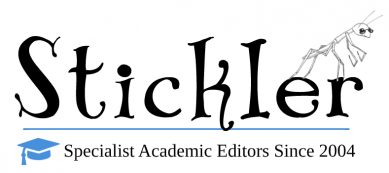Referencing your sources is an important part of any academic writing process. Having correct references can lend to credibility to your arguments, and lets your readers know you’ve analyzed authoritative works in your field. Referencing correctly can lead to higher grades on your papers and allow you to avoid plagiarism.
Understand When Citations are Needed
When you’re working with a lot of ideas and extant literature, it can be difficult to know when a citation is needed. But it’s vital to give credit where credit’s due. These six points below can help you identify whether a source needs to be cited, and can help you avoid plagiarism when quoting or summarizing a source.
- Ideas that belong to a particular source—Always cite ideas or opinions that are distinctive and not your own.
- An argument or analysis with a distinctive structure—Whether you’re paraphrasing or summarizing, always cite an author’s particular approach to solving a problem or argument.
- Specific information and data—If you’re using data that you found in another source, whether it’s facts, diagrams, or statistics, you should always cite the original source and give credit to the author. This can also help your readers if they are looking for additional information from that source.
- Phrases or quotes—Verbatim phrases or quotes used by an author in their argument should always be cited and placed in quotation marks.
- Uncommon knowledge—If you mention part of an author’s work in your writing, it’s important that you cite the source even if you’re paraphrasing or not quoting the author directly. Unless the information is common knowledge or widely held opinion, a source has to be cited.
- If in doubt, cite—If you’re not quite sure whether you should cite something, it’s better to err on the side of caution. That way you don’t have to worry about plagiarism or not giving credit for the work on which your own is based.
Identify an Appropriate Referencing System—And Stick to it
Whether you’re working with APA, Chicago, Harvard, MLA, or the myriad other referencing systems available, it’s important that you identify the appropriate one and stick to it. Failing to do so can lead to docking of marks or rejection from your target publication.
The referencing system you use can depend on your field of study, your faculty’s/target publication’s preference, or your paper’s format. Most schools and journals will tell you which style to follow, but if not, consistency is key (some journals, for example, are happy for papers to adhere to any style at submission, provided it’s consistent).
Style guides will help you stay on track and avoid combining different systems, but a professional academic editing service can also polish this up for you—at Stickler, for example, applying referencing styles is a core part of our work.
Take Good Notes
One of the keys to referencing effectively is to take good notes. These notes should include important information about your research, including a detailed record of the literature used. Every time you find a source that you might use in your paper, jot down the relevant information based on the style you’re following. Having everything organized and gathering the necessary information as you go will save you a lot of time and step-retracing as you write your paper.
Always Get a Second Pair of Eyes
As mentioned above, it’s always a good idea to get a second pair of eyes on your references and citations before submitting your project. In addition to ensuring that your specific referencing system has been applied correctly, we offer plagiarism checks to catch any similarities between your paper and extant work that might require a citation.

